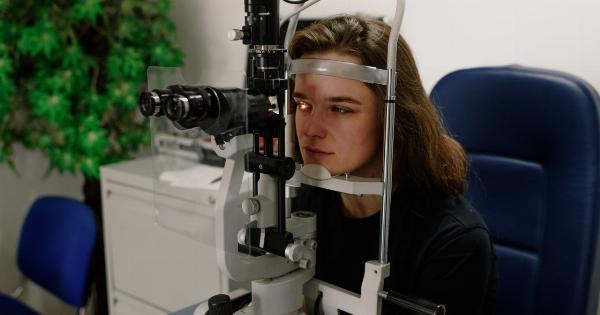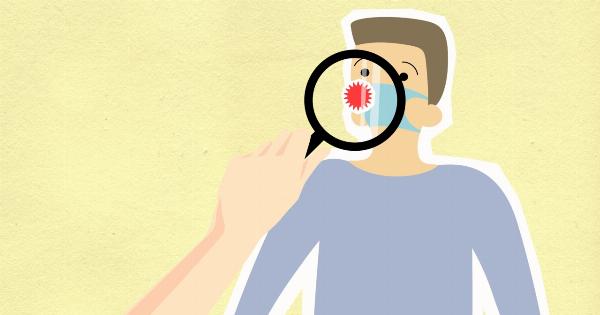Aspergillosis is a potentially serious respiratory infection caused by the inhalation of the Aspergillus fungus. This condition can lead to various respiratory problems and even be life-threatening in some cases.
Despite its severity, aspergillosis often goes unnoticed as its symptoms may be mistaken for other respiratory conditions. In this article, we will explore the silent threat posed by aspergillosis to your lungs and the importance of early detection and treatment.
Understanding Aspergillosis
Aspergillosis is primarily caused by inhaling spores released by the Aspergillus fungus, which is commonly found in the environment.
While most individuals breathe in these spores on a daily basis without experiencing any issues, certain factors can increase the risk of aspergillosis development.
Risk Factors
Several factors can make individuals more susceptible to aspergillosis:.
- Being immunocompromised: People with weakened immune systems, such as those with HIV/AIDS, those undergoing chemotherapy, or those who have had an organ transplant, are more susceptible to aspergillosis.
- Having chronic lung diseases: Those with pre-existing lung conditions like asthma, bronchiectasis, or cystic fibrosis have a higher likelihood of developing aspergillosis.
- Prolonged use of corticosteroids: The long-term use of corticosteroid medications can weaken the immune system, making individuals more vulnerable to respiratory infections, including aspergillosis.
- Exposure to construction or excavation sites: Construction sites often harbor Aspergillus spores, and individuals exposed to such environments have an increased risk of aspergillosis.
Types of Aspergillosis
Aspergillosis manifests in various forms, each with its own characteristics:.
Allergic Bronchopulmonary Aspergillosis (ABPA)
ABPA is an allergic reaction to Aspergillus spores. It primarily affects individuals with existing respiratory conditions like asthma or cystic fibrosis.
The immune system overreacts to the presence of Aspergillus, causing inflammation and mucus buildup in the airways. This leads to symptoms such as wheezing, coughing, and shortness of breath.
Chronic Pulmonary Aspergillosis (CPA)
CPA is a long-term aspergillosis infection that can cause progressive lung damage if left untreated. It usually affects individuals with underlying lung diseases or compromised immune systems.
CPA often presents with persistent cough, weight loss, fatigue, and occasionally coughing up blood.
Invasive Pulmonary Aspergillosis (IPA)
IPA is the most severe and life-threatening form of aspergillosis. It primarily affects severely immunocompromised individuals, such as those with leukemia or those who have undergone organ transplantation.
The fungus invades the lungs and can spread to other organs, leading to symptoms such as fever, chest pain, and severe breathing difficulties.
Diagnosis and Treatment
Diagnosing aspergillosis requires a combination of medical history evaluation, physical examination, imaging tests, and laboratory analysis. Chest X-rays or CT scans can detect characteristic signs of aspergillosis, such as lung cavities or infiltrates.
Sputum or tissue samples may be collected for further analysis to identify the specific species of Aspergillus involved.
The treatment approach for aspergillosis depends on the type and severity of the infection:.
Antifungal Medications
Antifungal drugs are typically used to treat aspergillosis. Commonly prescribed medications include voriconazole, isavuconazole, and posaconazole. These medications work by targeting and killing the Aspergillus fungus.
The duration of antifungal treatment varies based on the individual’s response and the specific form of aspergillosis.
Corticosteroids
In cases of severe allergic bronchopulmonary aspergillosis (ABPA), corticosteroids may be prescribed to reduce the inflammation and alleviate symptoms. However, long-term use of corticosteroids should be closely monitored due to potential side effects.
Surgery
In certain instances where antifungal medications are ineffective or the infection causes complications such as lung abscesses or cavities, surgical intervention may be necessary.
Surgery helps remove infected lung tissue and can be a potentially life-saving measure.
Prevention
While it may not always be possible to prevent aspergillosis, there are preventive measures individuals can take to reduce the risk:.
- Avoiding environments with high fungal spore concentrations, such as construction zones
- Wearing masks or respirators when engaging in activities that involve exposure to dust or spores
- Regularly cleaning air filters and purifiers to minimize indoor fungal spore presence
- Maintaining good hygiene practices, such as thorough handwashing
- Following prescribed treatment regimens for underlying lung conditions
Conclusion
Aspergillosis is a silent threat to your lungs that can have serious consequences if left undetected and untreated. It is crucial to raise awareness about this condition and its various forms to ensure early diagnosis and prompt intervention.
If you experience persistent respiratory symptoms, especially if you have an underlying lung condition or compromised immune system, seeking medical attention is essential. Remember, timely detection and appropriate treatment are vital in managing aspergillosis and preserving lung health.






























